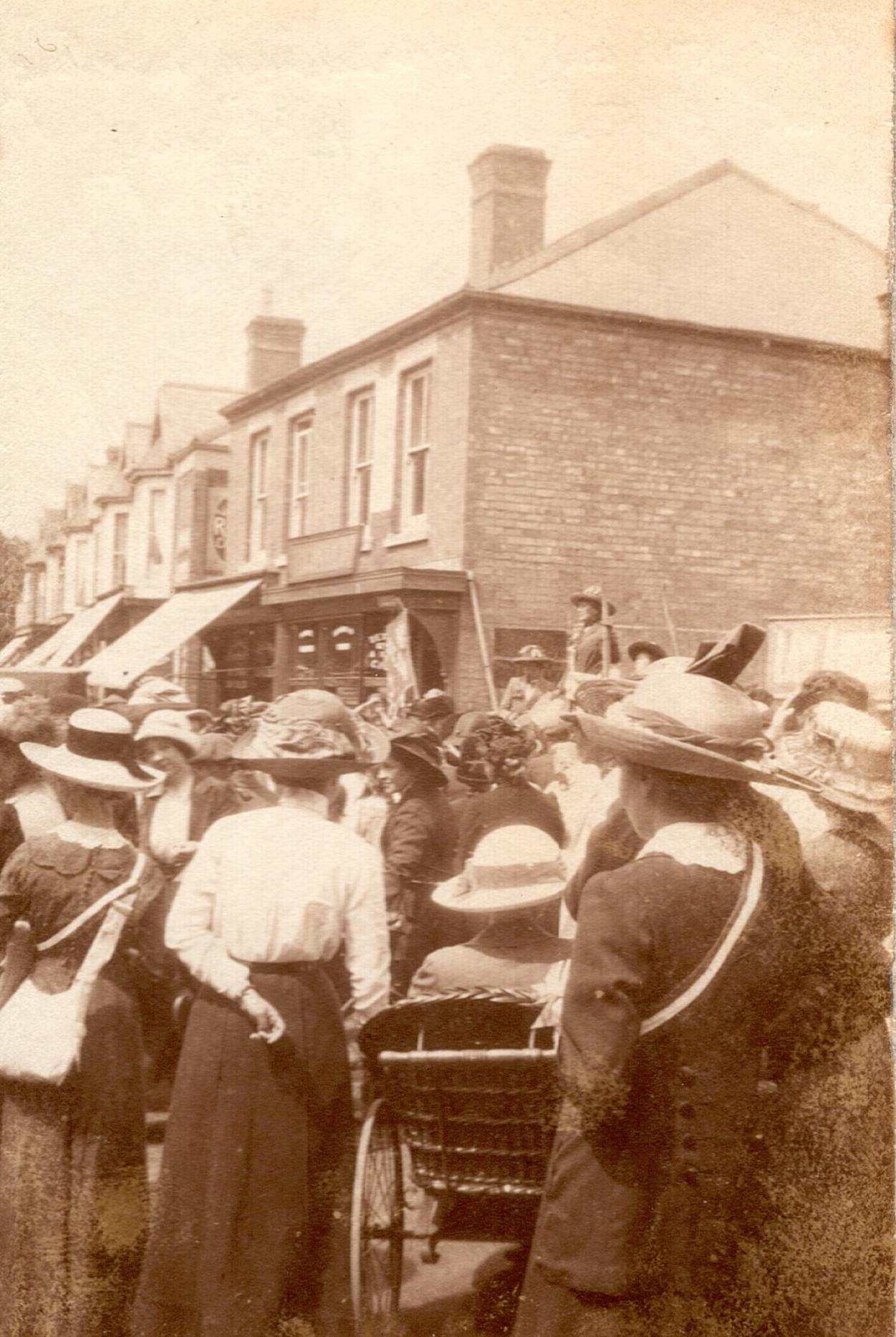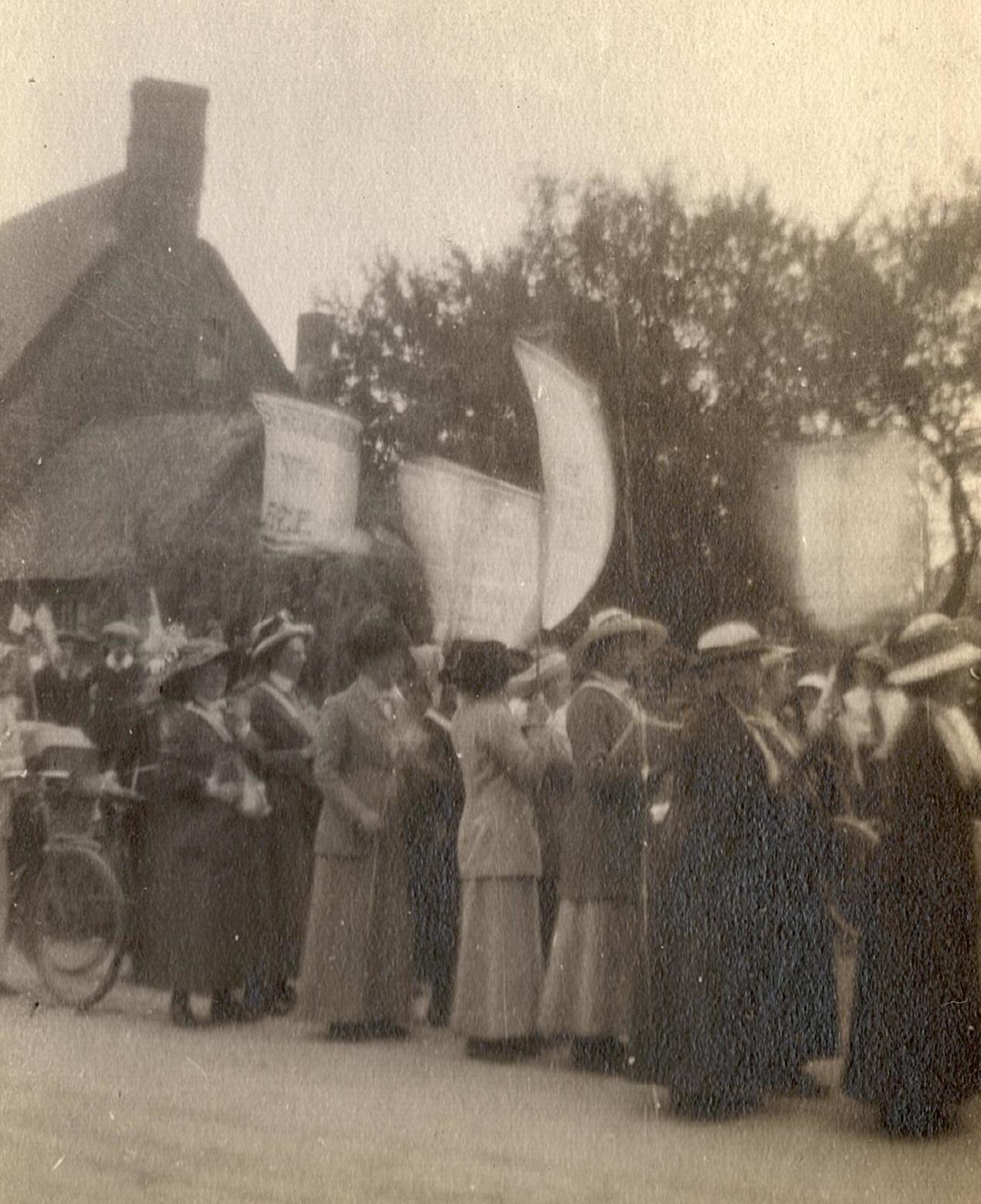The Great Pilgrimage of 1913 was a march organised by the National Union of Women’s Suffrage Societies (NUWSS) in support of their non-violent campaign for women’s suffrage. Suffragists from all over England and Wales marched to London, where 50,000 attended a rally in Hyde Park.[1][a]Scottish suffragists had marched from Edinburgh to London in 1912.[2]
The idea for the march was first put forward by Katherine HarleySuffragist who in 1913 organised the Great Pilgrimage, a march along six routes to converge on Hyde Park, London, where a rally in support of women's suffrage was held. at an NUWSS subcommittee meeting in London on 17 April 1913.[3] Plans were rapidly drawn up, and publicised through the NUWSS newsletter Common Cause, for six routes along which marchers would converge on London for a rally in Hyde Park on 26 July 1913. These were named the Great North Route (from Newcastle and East Anglia); the Watling Street Route (from Carlisle, Manchester and North Wales); the West Country Route (from Land’s End and South Wales); the Bournemouth Route; the Portsmouth Route; and the Kentish Pilgrim Way.[4]
In 2013 a series of walks were held to commemorate the centenary of the pilgrimage. Playwright Natalie McGrath’s play Oxygen, inspired by the 1913 march, was performed by the arts organisation Dreadnought South West at venues along the march route.[2][5]
March
The first marchers set off on 18 June, allowing six weeks to reach London from Carlisle and Newcastle. Each contingent was preceded by banners declaring the march to be law-abiding and non-militant, clarifying the stance of the NUWSS compared to the militancy of the Women’s Social and Political Union (WSPU), founded by Emmeline Pankhurst.[6] Women of all classes joined the march, including Lady Rochdale (wife of George Kemp, 1st Baron Rochdale), who marched from Carlisle to London.[7]
The march was organised in great detail. Advance information provided to marchers included a “village-by-village itinerary” with details about accommodation and facilities. A single piece of luggage per person would be transported, there were daily roll calls, and marchers were asked to wear rosettes in green, white and red – not the purple of the suffragettes. Some marchers brought horse-drawn caravans to accommodate themselves en route, while others stayed with local supporters or were found other accommodation. Marchers were welcome to join the pilgrimage for as long as they could; some women marched for six weeks but others could only spare a shorter time.[8]
Public meetings were organised along the routes of the march. The women were sometimes met with violence from hostile locals, as at Ripon where they were attacked by drunks celebrating the local agricultural show,[9] and at Thame where an attempt was made to burn one of the marchers’ caravans while they slept in it.[10]
Rally
On Saturday 26 July, the marchers and others converged on Hyde Park for their rally. They assembled at pre-arranged points to march to the park, where 78 speakers addressed the crowd from 19 platforms, one for each federation within the NUWSS. At 6 pm a vote was taken at each platform, and those present unanimously passed the motion “That this meeting demands a Government measure for the enfranchisement of women”.[11]
Aftermath
The march was a financial success, raising almost £9,000 in donations along the way, equivalent to almost £900,000 as at 2019,[b]Calculated using the retail price index measure of inflation.[12] and the organisers hoped a political breakthrough had been made as well when Prime Minister Herbert Asquith agreed to meet a deputation from the NUWSS on 8 August. But it was merely a symbolic gesture on the prime minister’s part, which led to nothing.[13]


